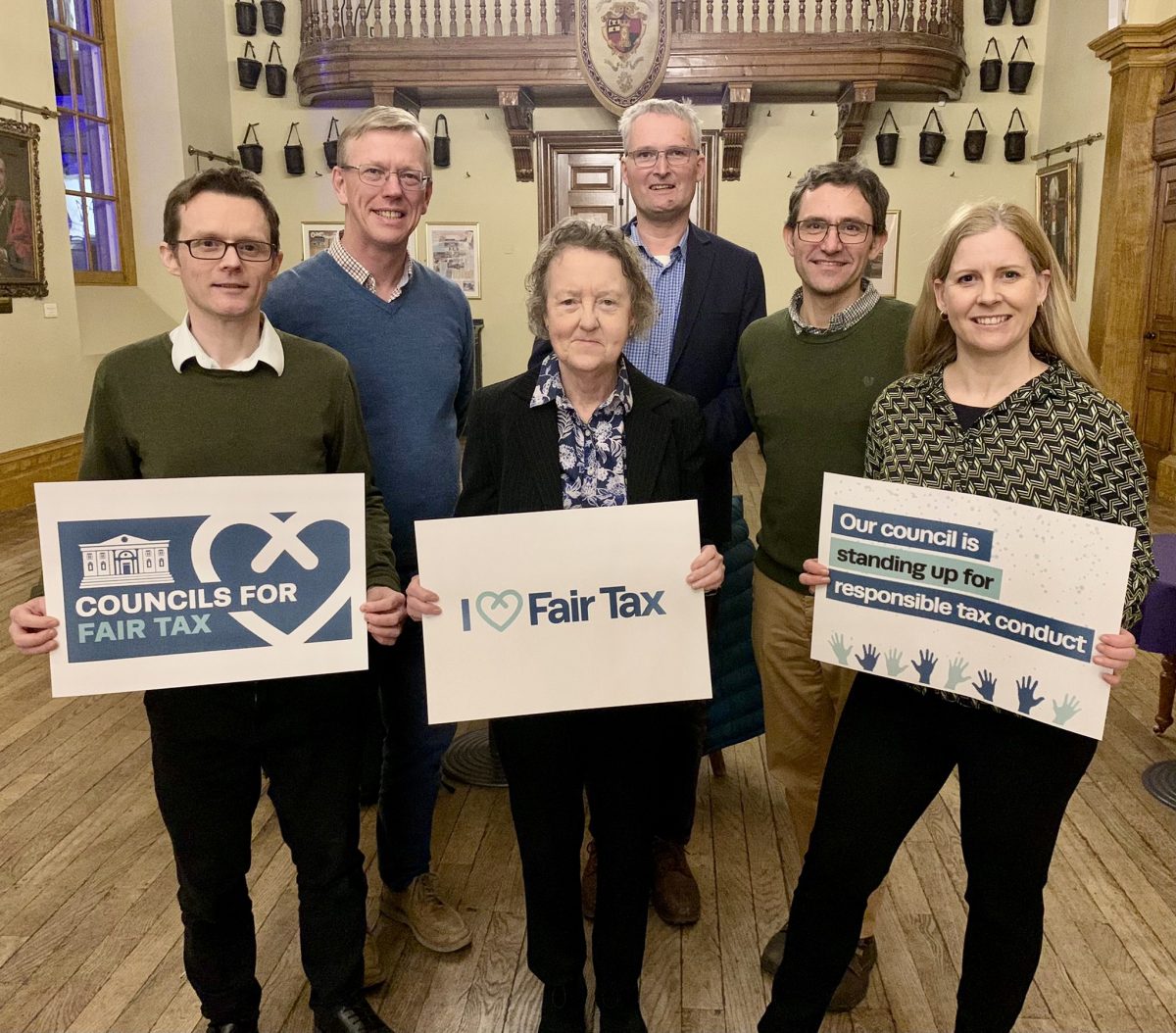Challenges, risks and disputes in the Australian energy transition

In summary
In this year’s article, we focus on three topics that have been critical in driving the energy transition in 2022. First, the impact in Australia of the global liquefied natural gas market together with industry developments such as the proposed amendments to the Australian Gas Security Mechanism, the proposed Gas Market Code and the growing number of gas price reviews. Second, risks and issues relating to renewables projects, including issues relating to technology and balancing the interests of local communities. Third, the changing nature of climate change litigation, including derivative actions, greenwashing and claims under the Australian Consumer Law.
Discussion points
- Supply issues in the global liquefied natural gas market and their impact on gas pricing
- Proposed changes to the regulatory framework of the Australian gas market to address shortfall in domestic gas supply and pricing
- Viability of arbitration and mediation to resolve gas market disputes
- Potential disputes relating to renewable energy technologies
- Changing nature of climate change claims
Referenced in this article
- Australasian Centre for Corporate Responsibility
- Australian Consumer and Competition Commission
- Australian Domestic Gas Security Mechanism
- Australian Energy Market Operator
- Australian Securities and Investments Commission
- Gas Market Code
A year of significant change
The winter of 2022 in Australia saw a perfect storm of events drive up electricity prices in Eastern Australia due to the ongoing covid-19 pandemic and supply chain restrictions, the impact on the global energy market of the war in Ukraine, the breakdowns of ageing coal power plants and a very cold winter on the east coast. As electricity prices spiked and supply issues intensified, the Australian Energy Market Operator (AEMO) suspended the wholesale electricity market for the east coast. It was the first time that such a measure had been applied across the entire east coast electricity market.
That spike occurred amid intensifying pressure to transform the global energy industry that is driven by climate change and changing consumer expectations as well as increasing pressure from shareholders, investors and other stakeholders, facilitated by technological advances in alternative energy. As a result, the pressure on large national and multinational companies to take action and set net zero goals or commitments is immense. With increasing pressure comes close scrutiny of the structures, planning and evidence in place to achieve those net zero commitments.
In last year’s article, we focused on disputes arising out of energy transition projects, including solar and wind farm projects, and how lessons may be learned from these disputes to improve the legal and regulatory framework required for them. In particular, we considered the shifts in the allocation of risk and liability to address various forms of risk such as commercial, regulatory, construction and operational risks across diverse transition projects.
In this year’s article, we focus on three topics that were critical in driving the energy transition in 2022.
First, we consider the impact of the liquefied natural gas (LNG) market globally – in particular, in Southeast Asia – on the market in Australia. We analyse developments resulting from the changed domestic needs for LNG, including the proposed amendments to the Australian Domestic Gas Security Mechanism (ADGSM). We also consider the growing number of gas price reviews in Australia and the Australian government’s proposed Gas Market Code.
Second, in last year’s article, we described the plethora of issues that may arise during the development, construction and operation of renewable projects, which may result in disputes and claims being brought in arbitration or litigation. With the increasing focus on hydrogen projects, it is inevitable that technology-related disputes will come to the fore. Recent cases relating to defects and technical issues with solar parks may assist with resolving technology-related disputes.
The number of renewable energy projects continues to grow, with 106 projects under construction in Australia that will deliver over A$24.8 billion in capital investment and 17,820MW of new renewable energy capacity as at February 2023. It is important for all parties involved to be aware of the impact that these projects may have on all interested parties, including regional communities where the projects and infrastructure are being developed. Issues with local residents have disrupted the continuation, or indeed the commencement, of a project, as is the case in rural Victoria.
Third, we consider the growing and changing nature of claims being brought against the private sector in relation to climate change and greenwashing. On one hand, we see claims increasingly focusing on the failure of the private sector, including energy companies and finance-related entities, to take sufficient action to mitigate climate change risk. Pressure from shareholders and groups such as the Australasian Centre for Corporate Responsibility (ACCR) are resulting in the appointment of climate-conscious boards, as happened with AGL – one of Australia’s biggest energy producers. Most recently, the first derivative action has been brought against Shell plc in the High Court of England and Wales. Similar derivative actions could be brought in the Australian courts.
On the other hand, we see a growing number of regulatory enforcement claims relating to greenwashing (ie, where the private sector has overstated the steps that it is taking with respect to climate change). The Australian Securities and Investments Commission (ASIC) has commenced its first court proceedings against Mercer Superannuation for greenwashing. The Australian Consumer and Competition Commission (ACCC) has identified greenwashing as the first of its 2023–2024 enforcement priorities.
Tensions and disputes in Asian LNG market and impact in Australia
Increased demand for LNG in Europe
Across Southeast Asia, multiple new LNG receiving terminals are presently under construction, all aimed at reducing much of the region’s reliance on thermal coal and intended to take advantage of the favourable pricing attached to the significant oversupply in the global LNG market – or that was the plan when many of these projects were conceived and approved.
Since then, LNG pricing has whipsawed both up and down, but took a rather vertical upturn following Russia’s military actions in Ukraine in 2022. The consequences of those actions – including but far from limited to the imposition of trade sanctions on Russia; the sabotage of the Nord Stream gas pipelines; new floating storage and regasification unit-driven LNG receiving terminals springing up across Europe; and the EU natural gas and refined product price caps – have resulted in fundamental and rapid changes to the global LNG markets. Previous oversupply turned to significant undersupply, exacerbated by force majeure events affecting existing LNG production at certain liquefaction plants globally. Some anticipated new production, required to satisfy the existing demand, was delayed from market and the future supply that was due from Russia is now off-limits for many major purchasers.
A significant part of the supply previously destined for the Southeast Asian market in particular has been diverted to Europe, where higher prices may be achieved. Pakistan LNG Ltd’s tender for a four- to six-year supply of cargoes went unanswered in October 2022, reflective of the market shifting towards Europe to fill the void caused by the lack of Russian pipeline supply. While prices have cooled quite significantly since then, with European purchasing down ahead of the northern hemisphere’s summer and with inventory at strong levels, it is anticipated that the second half of 2023 may bring challenging times once again.
LNG is being fought over
Prices of individual cargoes had been so high that no failure to deliver or to take under a master supply and purchase agreement could go unchallenged. When the defaults pertain to longer-term supply arrangements under sale and purchase agreements (SPAs), this is very much more so the case and the issue is compounded. While many of Asia’s new LNG receiving facilities had put marquee supply contracts in place to achieve project funding, there is a real prospect for many of those contracts to soon lie in default either because suppliers may wilfully default, absorb the liquidated damages and achieve significantly higher market-based prices in Europe, or because some regional buyers with market-based pricing mechanisms will struggle to pay their unexpectedly inflated gas bills or provide sufficiently robust credit support. Alternatively, if the price of LNG continues to dip, will buyers themselves default under SPAs to purchase lower-priced cargoes on the spot market?
Price review provisions in SPAs are being invoked more readily and fought over keenly. The continued development of market-based pricing indices such as the Japan/Korea Marker has the potential to confuse matters, and result in dual streams of oil-linked and purely LNG spot-linked pricing in the market. Wilful defaults resulting in capped liability liquidated damages are being challenged. With the relatively recent influx of proprietary traders to the LNG space, the market has the potential to become extremely fractious in the coming months and years.
As legacy SPAs expire and are replaced with new arrangements, many of the disputes that had previously been referred to arbitration in the United Kingdom or Europe are now being determined by arbitration in the Asia-Pacific region – a reflection of the growing influence of Asian end users getting involved at the joint venture level in production projects.
All in all, this is a fascinating time for the market from both a contracting and, particularly, a disputes perspective, impacting the entire Asia-Pacific region and beyond.
Increased need for LNG in Australia
The energy crisis in Australia during the second half of 2022 placed an increasing need to use Australia-produced gas domestically that would otherwise have been headed for export markets as LNG. Australian domestic gas markets normally benefit from inverse demand curves for domestic markets and LNG; the lower demand for LNG during the northern hemisphere’s summer coincides with high demand for domestic gas during the southern hemisphere’s winter, which provides switching opportunities between netback LNG prices and domestic spot prices with a convergence of LNG and domestic pricing.
However, with approximately 30 coal-fired power plants not in operation and various constraints on renewable sources of energy in Australia driving domestic gas demand (coinciding with high demand from the northern hemisphere sustaining LNG pricing), the LNG prices for spot cargoes and uncontracted export capacity has resulted in potentially critical shortages in domestic supply due to spiking domestic pricing.
In February 2023, the Australian government announced that it was seeking consultation on reforms to the ADGSM. The ADGSM permits the government to restrict the export of LNG to release more supply for domestic needs. The government has proposed increasing its powers to review domestic needs quarterly, rather than annually, to determine whether it is necessary to limit LNG exports to meet local demand. If a shortfall in gas supply was forecast in a quarter, LNG producers would be required to obtain permission to export gas that quarter.
The ADGSM has not been formally triggered. This is in part due to the heads of agreement that has been signed by the Australian Prime Minister and representatives of three major LNG exports to maintain a secure supply of gas on the east coast. If the ADGSM were to be invoked, it may have an adverse impact on the global LNG market if exports were to be significantly curtailed, threatening Australia’s reputation as a low sovereign risk counterparty for resource supply.
It may also give rise to potential investment treaty claims by foreign investors who have invested in LNG projects in Australia. These investors may argue that the change in the regulatory framework resulting from the amendment to the ADGSM is contrary to the investment protections provided when they invested in the capital-intensive LNG projects.
Growing number of Australian gas price reviews
Gas price reviews have been on the rise in Australia. These have been a long-standing feature of the long-term contracts required to underpin investment in new large-scale capacity projects. The threshold for triggering a price review, the process for the price review, and the factors and considerations to be taken into account to determine the new price all depend on contractual mechanisms.
The dispute resolution process for resolving price reviews typically involves arbitration (or sometimes expert determination) to set a new market price. There are usually significant constraints on the matters to be considered in determining that price. There are also challenges and limitations inherent in this process.
A key issue is often arbitrator selection. While industry-specific experience may be desirable, the pool of arbitrators is limited, more so when significant legal skills are usually required to deal with the difficult issue of contractual construction, which often besets price review clauses.
Consequently, it may be difficult to agree on an arbitrator and the arbitrator will rarely, if ever, have the same experience of the gas market (and the interactions between domestic and LNG markets) as commercial players. For that reason, the expert reports provided to the arbitrator are critical in assisting the parties and the arbitrator to determine a new price.
In practice, many price review arbitrations are settled during this process. If an award or decision is issued, it is final and binding on the parties. It may be that neither party is satisfied with the result, particularly if the arbitrator picks a price between the prices contended by the parties. Nevertheless, an arbitral award will be difficult to challenge as the permissible grounds for challenge are limited primarily to procedural, and limited public policy, issues.
Proposed Gas Market Code
The government has proposed a mandatory code of conduct for the gas industry (the Gas Market Code), which includes a reasonable pricing framework with an interim gas price cap pending release of the Gas Market Code. The proposed changes to the gas market will have a significant impact on gas price agreements and future price reviews, and ultimately the future development of and investment in the industry.
The reasonable pricing framework in the proposed Gas Market Code is the basis for producers and buyers to negotiate domestic wholesale gas contracts at reasonable prices and on reasonable terms. Such prices should reflect the cost of domestic gas production, taking into account a reasonable return.
In anticipation of the proposed Gas Market Code, the government introduced a temporary, emergency price cap on wholesale gas prices throughout the east coast for 12 months at A$12 per gigajoule (effective as of 23 December 2022). The price cap is intended to ensure that the gas industry remains viable and the impact of global energy pressures on households and businesses on the east coast of Australia is limited. However, the cap does not apply to existing contracts, but does apply to new contracts and variations of existing contracts. Perversely, the effect of this may be that parties cannot agree to vary the price of gas under an existing contract but can have it reset by arbitration precluding a negotiated settlement above A$12 per gigajoule but permitting an arbitrated outcome above that price.
The proposed Gas Market Code will apply until the ACCC advises the government that there is sufficient gas supply in the domestic market at prices that reflect the underlying costs of production.
Disputes arising out of the proposed Gas Market Code are likely to be resolved by mediation or arbitration.
These dispute resolution processes require specialist knowledge to design and maintain as practices in mediation and arbitration develop. Given ACICA is at the forefront of these practices, it would be suited to administer these dispute resolution mechanisms for gas market participants.
Because the timing of the Gas Market Code remains uncertain, the interaction between it and price reviews presently under way is unclear. There is a possibility that current price reviews based on market price determination (already uncertain because of the effects of the price cap, which have discouraged new long-term, high-volume contracts) will morph into a pricing determination based on reasonable cost.
Risibly, the Regulatory Impact Analysis conducted by the Department of the Treasury and the Department of Climate Change, Energy, the Environment and Water, which was hastily conducted at the end of 2022, suggested that Gas Market Code-based pricing arbitrations setting gas prices by reference to a reasonable rate of return on production costs (which, for facilities producing both domestic gas and gas for LNG, will involve acute questions of cost allocation and applicable rates of return) would be resolved with 250 hours of legal advice at A$500 per hour and arbitrator costs of A$20,000. Those costs were likely underestimated by at least one and possibly two orders of magnitude.
Disputes relating to renewable projects
Disputes relating to energy transition projects continued throughout 2022 and into 2023. This is attributable to the ongoing global growth in investment into renewable energy technologies (RETs) and the construction of renewable energy projects, both of which are essential to achieving net zero carbon dioxide emissions by 2050.
Investment continues in traditional and developed RETs that are fairly well understood (ie, solar, hydroelectric and wind energy sources) as well as RETs that are still emerging and being refined to improve their ultimate functionality (ie, advanced batteries (such as iron flow batteries), hydrogen electrolysers, and direct air capture and storage). Emerging RETs are considered to play a critical role in reducing carbon emissions between 2030 and 2050.
In Australia, large-scale battery projects are growing in both size and number. The Victorian Big Battery and the Hornsdale Power Reserve in South Australia are already in operation. New battery projects, such as the Kurri Kurri Battery, Eraring Battery and the Waratah Super Battery in New South Wales, are being developed.
Hydrogen projects are also growing, some of which have faced issues at the planning stage. Although plans for the 6GW Moolawanta hydrogen facility in South Australia have been shelved due to water supply and desalination risks, a 3GW hydrogen and ammonia project is being developed in Western Australia. Queensland is planning to host the world’s largest hydrogen manufacturing facility.
As these RETS are implemented and large-scale facilities constructed, a plethora of disputes are likely to arise, as described in last year’s article. Technology issues and defects, typical construction issues relating to variations, extensions of time and delays as well as regulatory issues (including with AEMO) are common. Such issues must be considered when allocating risks in the complex commercial and legal arrangements between the various stakeholders in an energy transition project, as demonstrated by the recent English court decisions considered below.
The development of the much-needed infrastructure to transmit energy from renewable projects to power plants serving metropolitan areas, as well as the issue of judgments in cases involving issues with technology and equipment used for renewable projects, have also led to disputes.
Claims relating to defects in technology and equipment
Disputes relating to defects in technology and equipment are prevalent in energy transition projects due to the use of new and unproven technologies. Indeed, there are numerous ongoing disputes related to defective technologies in the renewables and other sectors at present. Many disputes are referred to arbitration due to the confidential nature of the proceedings and the ease of enforcing the final award across borders.
The impact of defects on renewable projects was considered in a recent decision by the High Court of England and Wales, Toucan Energy v Wirsol Energy. Toucan claimed £30 million for losses incurred as a result of construction- and equipment-related defects across 18 industrial-scale solar parks that had been constructed by Wirsol. Toucan claimed that the defects were so systemic that many of the sites effectively required a total reconstruction and that the projects were at risk of catastrophic failure. Toucan claimed damages for remedial and replacement costs, diminution in the value of the solar parks due to the ongoing blight caused by the defects, costs relating to refinancing debt for the project, revenue lost as a result of the underperformance of the solar parks and liquidated damages.
Wirsol denied Toucan’s claims, arguing that the solar parks were properly built. Wirsol brought a counterclaim of £6.5 million for payment of outstanding invoices for asset life extensions. Toucan denied that it was liable to pay the invoices, arguing that a condition precedent for payment under the contract had not been satisfied or waived.
The High Court awarded damages to Toucan for certain defects. However, most of Toucan’s claims were rejected for lack of evidence. As the defects could be remedied, Toucan had not demonstrated the alleged blight on the solar park investments. The refinancing costs were also rejected as Toucan did not demonstrate that the defects necessitated refinancing to prevent breaches of the facility agreements. Wirsol’s counterclaim was upheld and the High Court found that Toucan was obliged to pay the outstanding invoices.
Claims relating to technology issues
The use of emerging technologies in energy transition projects can also give rise to distinct disputes where the technology fails or fails to perform according to expectations. In addition to breach of contract claims, negligence, misleading conduct and deceptive conduct claims are also likely to be pursued between the technology developer and the project owner, investor or main contractor. For this reason, it is imperative that proper records are kept of pre-contractual negotiations so that there is an accurate record of the representations made by the technology developer, which can be relied on at the relevant point in time.
Delays in the development and construction of renewable energy projects may lead to claims for liquidated damages. Indeed, power purchase agreements, software development agreements and construction contracts often include liquidated damages provisions if completion dates are not met. Contractor-related delays to the performance of such contracts may also result in the principal refusing to make payment for services rendered under the contract if the work is considered incomplete.
In Triple Point Technology Inc v PTT Public Company Ltd, the UK Supreme Court held that a commodities trader had a right to recover liquidated damages from a software developer up to the date of termination despite the software developer suspending work under the contract due to non-payment. The Supreme Court considered that limiting a liquidated damages clause to come into effect when the work is completed and accepted is ‘inconsistent with commercial reality and the accepted function of liquidated damages’.
Although this decision was made in a technology case that was specific to the facts of the particular contract, it serves as a cautionary reminder for technology and construction contractors alike that suspending work under a contract due to non-payment does not absolve the contractor of liability to the principal for delay liquidated damages, particularly if the termination relates to the wrongful suspension of work by the contractor.
While disputes surrounding the construction of a damages clause are highly fact-specific, this case reaffirms the need for carefully constructed liquidated damages and limitation of liability clauses to maximise (or mitigate, as the case may be) the quantum recoverable for delays or other breaches of contract.
Disruptions to energy transition projects in Australia
Despite the positive impact that energy transition projects can have on the environment and the economy, the implementation of such projects can face local opposition. This is primarily due to concerns raised by affected parties to public and private stakeholders regarding who will bear the financial and social burden of the proposed project.
For example, there is a long-standing dispute between residents in the rural Victorian electorate of Ripon and Victorian electricity distribution company, AusNet. In 2019, AusNet was awarded a tender by AEMO to construct a power transmission line that would run through Ripon. The transmission line is intended to carry wind- and solar-powered energy from a power station in Western Victoria to the north-western end of Melbourne, which will result in renewable power being supplied to approximately 500,000 homes.
Although the project will help the Victorian government to reach its target of generating 50 per cent of the state’s electricity from renewables by 2030, the adverse impact on the residents’ interest in their land and their ability to grow potatoes has led to mass opposition. The estimated cost of the current route of the transmission lines is A$737 million, while the preferred underground route will cost 16 times more. The residents in Ripon argue that the more expensive option will reduce the negative social and financial impacts of the project.
There has also been opposition to wind farms mainly due to wind turbine noise. For example, in Uren v Bald Hills Wind Farm Pty Ltd, two farmers brought a nuisance claim complaining about the noise from the Bald Hills Wind Farm. The court found in the farmers’ favour and held that the wind farm could not operate at night. The court also ordered compensation be paid to the farmers for the noise disturbance and aggravated damages because of the wind company’s high-handed conduct towards them.
These projects highlight the challenges faced when trying to balance the needs of local residents against the needs for more renewable energy and for cost-efficient solutions to maximise the use of renewable energy.
Growth in climate change litigation
Climate change litigation continues to grow in many countries around the globe. Australia has the second-largest number of climate change-related cases in the world after the United States.
In Australia, the nature and scope of climate change claims has increased during the past few years with a number of significant decisions being handed down by the courts. In these cases, the courts have acknowledged the duties of the public sector to, in effect, protect against climate change.
In the Netherlands, the courts have already upheld the duty of the private sector to protect against climate change. In Friends of the Earth Netherlands (Milieudefensie) v Royal Dutch Shell, the court held that Royal Dutch Shell has a duty of care to take action to reduce its greenhouse gas emissions and ordered the company to reduce its emissions by 45 per cent (as compared with 2019 levels) by 2030.
In Australia, the potential expansion of the duty of care to the private sector in a similar manner is a real risk. Claims have been brought against companies in relation to the statements and disclosures made about their operations, whether it be for a failing to adequately disclose their assessment of climate risk in relation to investment companies or in relation to statements ‘greenwashing’ their operations.
Recently, the ACCR commenced a class action against Santos (one of Australia’s largest oil and gas producers) claiming that statements relating to its net zero targets are misleading and deceptive, in breach of the Corporations Act 2001 (Cth) and the Australian Consumer Law (ACL), discussed further below.
Duty of care
Public sector
It is unsurprising that companies involved in the energy sector, including mining and resource companies that fuel energy, have been at the centre of climate change litigation.
Indeed, the importance of climate change risk has been a growing consideration for environmental approvals of coal mines and other energy-related projects. In Gloucester Resources Limited v Minister for Planning, known as the Rocky Hill case, the New South Wales Land and Environment Court refused a development application for a coal mine, including because of the adverse impact of the coal mine on the climate and the need to protect the environment from climate change. That case was brought during the review stage of a development application.
A different, more proactive, approach was taken in Sharma v The Federal Minster for the Environment, another case that also related to the development of a coal mine. The Minister for the Environment had statutory power under the relevant legislation to approve or not approve the coal mine project due to the potential environmental impact of such a project.
The case was brought by a group of Australian teenagers on behalf of all Australian children. The case was commenced before the Minister made the final decision on the basis that the Minster owed a duty of care when exercising her discretion with respect to the statutory power. The claimants argued that the Minister owed a duty to take reasonable care to avoid causing personal injury to Australian children, including with respect to the future, when exercising the statutory power to approve or not approve the project.
As the case was not a judicial review case, the claimants could plead and argue the merits of the case. In doing so, the claimants could bring extensive expert evidence to support the duty of care claimed and the detrimental impact of developing the coal mine to the environment, to the climate and, thus, to their future.
At first instance, the court upheld the claim and found that the Minister owed a duty of care to all Australian children. However, the decision was overturned on appeal. The Full Federal Court did not find that the Minister owed a duty of care, and downplayed the causal link between the duty of care and the potential impact of the exercise of statutory power. The court was not satisfied that there was sufficient closeness between the Minister’s decision and any harm that might arise out of an extension of the coal mine.
Private sector
Claims are increasingly being brought against the private sector, particularly against companies involved in the energy sector; not only companies involved in the extraction, production and distribution of energy sources, but also those that provide financial investment to the energy sector.
For example, claims have been brought by shareholders and other stakeholders against finance-related entities, including banks and super funds, to disclose information relating to climate change business risks and plans to address these issues in the future.
Mark McVeigh brought a claim against REST, a superannuation fund, on the basis that REST had violated the Corporations Act 2001 (Cth) by failing to provide information related to climate change risks and plans to address those risks. He alleged that REST failed to act with care, skill and diligence when making investments, and failed to act in his best interests by not properly considering the risks that climate change posed to the fund’s investment. The case settled on the court steps. REST acknowledged, as part of the settlement, that climate change ‘is a material, direct and current financial risk to the superannuation fund’.
Guy Abrahams, a retail investor, brought a claim against the Commonwealth Bank of Australia requesting the disclosure of documents relating to the financing of special fossil fuel and gas projects on the basis that the bank may be in breach of its goals under the Paris Agreement. This case is ongoing.
First derivative action
In February 2023, a claim was commenced by ClientEarth against Shell plc and its directors in the High Court of England and Wales. The claim is the first derivative action to be brought for mismanaging climate risk in breach of the UK Companies Act 2006.
The claim was brought by ClientEarth in its capacity as a shareholder with support from institutional investors, such as UK pension funds and European asset managers. It is claimed that Shell plc’s Energy Transition Strategy is not aligned with the Paris Agreement and does not comply with the Dutch court’s judgment to reduce emissions by 45 per cent by 2030.
A similar claim could be brought against energy companies in Australia for breach of the Corporations Act 2001 (Cth) or the ACL. A complaint has been made to the ACCC and Ad Standards that Shell Australia has allegedly made misleading or deceptive statements about the impact of its products and operations on the climate and environment.
Claims relating to greenwashing
The growth in reporting obligations of all companies to report on climate change business risks and net zero targets has resulted in a new set of claims being brought against companies for greenwashing their reports.
Greenwashing is, broadly, the exaggeration or making of false statements regarding a company’s green or environmental credentials. It will likely capture net zero targets that are not based on real and scientifically backed plans to reduce emissions or have underlying assumptions that have not been made clear.
The act of greenwashing risks breaching the Corporations Act 2001 (Cth) or the ACL as misleading or deceptive conduct, or as misrepresentations as to future matters. Inaccurate disclosures about a company’s environmental credentials may amount to misleading or deceptive conduct in breach of the Corporations Act 2001 (Cth) or the ACL if the conduct leads a consumer into error, regardless of intention. Additionally, representations about future claims that are made without reasonable grounds could amount to misleading or deceptive conduct. The reasonable grounds need to be present at the time the company makes the statement.
As mentioned above, the ACCR has commenced proceedings against Santos alleging misleading and deceptive conduct and misrepresentations in breach of the Corporations Act 2001 (Cth) and the ACL. The ACCR alleges that Santos made representations in its 2020 annual report that its natural gas was a ‘clean fuel’ and provided ‘clean energy’ without disclosing that the processing of natural gas releases significant quantities of carbon dioxide and methane.
The ACCR also alleges that Santos made statements in its 2020 annual report that it had a ‘clear and credible’ plan to achieve net zero scope 1 and 2 emissions by 2040. However, Santos’ expansion of its natural gas operations means that it will increase its greenhouse gas emissions, and its net zero plans depend on a range of undisclosed qualifications and assumptions about carbon capture storage processes and the production of blue hydrogen.
Recent ASIC claims
ASIC is increasing its focus on greenwashing cases and has announced that greenwashing would be one of its key enforcement priorities.
ASIC has taken action with respect to energy companies and funds, including superannuation funds, for greenwashing claims. For example, ASIC has fined the following companies for alleged greenwashing:
- Black Mountain Energy for false or misleading representations made to the Australian Stock Exchange relating to a natural gas development project with net zero carbon emissions.
- Tlou Energy Limited for false and misleading statements made to the Australian Stock Exchange that, for example:
- it was producing clean energy through renewable sources and gas-to-power projects;
- the electricity produced by Tlou would be carbon neutral;
- Tlou had environmental approval and the capability to generate certain amounts of electricity from solar power; and
- its gas-to-power project would have ‘low emissions’.
- Diversa Trustees Limited for broad statements made about one of its superannuation products that were potentially misleading to consumers as the investment screening claims that it would prevent investments in ‘polluting and carbon intensive activities’ or ‘activities which cause environmental and social harm’ were more limited than suggested.
In February 2023, ASIC commenced court proceedings against Mercer Superannuation (Australia) Limited for allegedly making misleading statements about the sustainable nature and characteristics of its investment options and the involvement of those investment options in carbon-intensive fossil fuels, such as thermal coal. This is the first greenwashing court case brought by ASIC.
Conclusion
The energy transition continues to give rise to a variety of disputes as new challenges, new risks and new technologies are explored and solutions are devised. Managing commercial and legal risks with appropriate risk allocation together with minimising and mitigating claims will continue to be essential for the successful implementation of energy transition projects that are essential to address climate change.
*The authors gratefully acknowledge the assistance of Nivvy Venkatraman (associate), Lea Hiltenkamp (associate) and Natalie Jarmusz (paralegal) in preparing this article.













